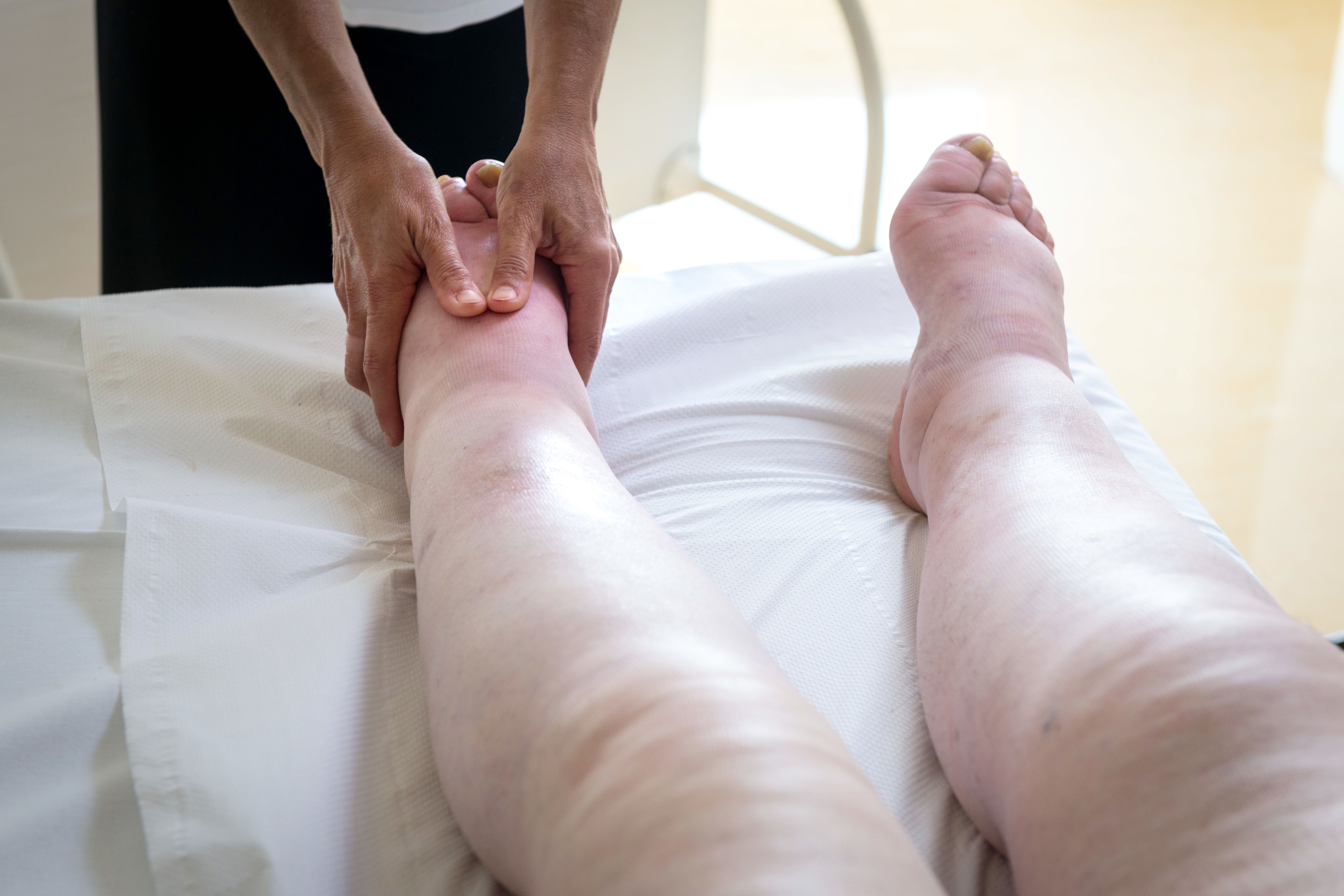What is post-thrombotic syndrome?
The most common chronic complication observed after phlebitis is post-phlebitic disease, also called Post-Thrombotic Syndrome (PTS). This syndrome encompasses all manifestations associated with chronic venous insufficiency.
Following phlebitis, significant damage to the valves and walls of deep veins can occur, leading to dysfunction. These valves are crucial for blood flow to the heart. Thus, when their functioning is impaired, blood cannot return in sufficient quantity to the heart, causing stagnation in the vein and an increase in pressure inside it.
What are the symptoms of post-thrombotic disease?
While some people who have had deep vein thrombosis (DVT) recover completely, others may have persistent symptoms in the legs or arms: swelling, pain, feelings of heaviness, and cramping are among the symptoms.
- These symptoms include:
- Persistent swelling of the extremities
- Chronic (or fluctuating) pain
- Non-specific discomfort in the extremities
- Generalized aching
- Sensation of heaviness, tiredness, and cramping in the extremities
- Post-thrombotic pigmentation, leading to dark skin pigmentation
- Bluish discoloration of toes/fingers, foot/hand, or diffuse discoloration of leg/arm
- Dry skin
- Eczema
- Skin hardening
- Development of varicose veins
- Skin ulceration (stasis ulcer)
- "Atrophie blanche" or "white atrophy"
- "Dermatoliposclerosis"
Diagnosis of post-thrombotic syndrome
Post-thrombotic syndrome is typically diagnosed through clinical evaluation, meaning that if the signs, symptoms, and medical history align with the condition, no specific tests may be required. However, your healthcare provider may recommend blood work and/or a leg ultrasound for thoroughness. To make a diagnosis, your doctor will inquire about your medical history, specifically any previous deep vein thrombosis (DVT), and assess your symptoms through a physical examination. Additional tests may also be conducted, such as blood tests to check clotting issues and leg ultrasounds to identify vein problems. Sometimes, a Villalta score might be used to gauge the severity of your signs and symptoms. A score of 15 or higher indicates a severe case of post-thrombotic syndrome.
Comprehensive strategies for post-thrombotic syndrome treatment
The treatment for post-thrombotic syndrome (PTS) depends on the severity of the condition. Typically, the approach involves a combination of strategies aimed at alleviating symptoms and preventing further complications. Treatment may include:
Elevation and exercise
Elevating the affected leg above the heart level is recommended, especially during periods of rest or sleep. Special leg elevation pillows can facilitate comfortable reclining. While excessive rest is not advised, incorporating leg elevation during relaxation at home can assist in reducing swelling.
Engaging in exercises such as ankle joint flexing and activities that strengthen the calves is beneficial. These activities help promote blood flow back to the heart due to the influence of gravity.
Compression stockings
Graduated compression garments play a crucial role in PTS treatment. Your doctor or physical therapist can recommend specific types available over the counter or through medical supply stores. Properly fitting compression stockings, made from unique elastic fabric, apply pressure on the ankle. This improves blood circulation, reduces swelling, and alleviates pain.
It is essential to ensure that the stockings fit correctly and provide the appropriate amount of compression. Your doctor can assist in selecting the right stockings for your individual needs.
Medication treatment
In some cases, blood thinners may be prescribed to prevent the recurrence of blood clots in the legs. While there are no standard medications for the treatment of PTS, recent studies suggest potential symptom improvements, such as reduced leg swelling and itching, with the use of a supplement called horse chestnut extract.
Practical measures for DVT prevention
You can lower your risk of deep vein thrombosis (DVT) and hence lower your risk of PTS. It is more likely that you will get DVT if you are immobile or sedentary for extended periods. Your doctor might offer you further preventive advice if your immobility is the result of surgery or another medical condition.
Some of these include:
• Move and walk
• Use compression tools
• Utilize compression stockings with a prescription
• Use blood-thinners


